The
following excerpts are from the Pastoral Statement on the Manner of
Distributing and Receiving the Sacrament of Holy Communion (issued for
the Diocese of Sandhurst, Australia, by the Most Reverend Bishop Bernard D.
Stewart, on the Feast of Corpus Christi, 1976)
Decline
and abolition [of Communion in the hand]
Communion by hand stayed
in use for nearly nine centuries. Already earlier it had begun to grow less
common when reservation of the Blessed Eucharist became limited to churches and
administration of the Sacrament restricted to priests and deacons. It lost
favour when the doctrine of the Real Presence was doubted or denied by a number
of ecclesiastics.
To make clear that at the
moment of consecration the bread and wine are changed into the Body and Blood of
Christ, though the outward appearances of taste, colour and form remain, to
inculcate that the Sacred Host is not ordinary bread; to foster a sense of
reverence and adoration of Our Lord invisibly but actually present, Communicants
were not allowed to touch the Blessed Sacrament with their hands.
This major rubric should
not be considered just a negative safeguard against error; it was a positive
disposition to develop faith, adoration and humility in the communicant, as the
Holy See has explicitly stated:
Later on, with a
deepening understanding of the Truth of the Eucharistic Mystery, of its force,
of the presence of Christ therein … with a driving sense of reverence for this
Most Holy Sacrament and with a compelling attitude of humility in receiving it,
the custom was established that the minister himself should place a Particle of
the Consecrated Bread on the tongue of those receiving Communion (Instruction,
Memorial of the Lord, May 29th, 1969).
For these reasons,
Communion on the tongue, in use from ancient times, superseded Communion on the
hand and become the only method of receiving the Blessed Eucharist, and so it
has remained, sacred and unchanged, for more than a thousand years.
Four hundred years ago
certain protesting sects of the West fell away from the total Eucharistic faith
of the Catholic Church; they gave up the belief that at Mass the bread and wine
are changed into the Body and Blood of Our Blessed Lord; they gave up adoration
of the Blessed Sacrament; they abandoned the Mass and introduced a communion
service by hand, standing or sitting….
Shocking Sacrileges
Doctrinal errors quickly
produce practical abuses. The Holy See tells us that the irreverences coming
from faulty Eucharistic theology are many in number and spread through many
places.
Numerous and widespread
abuses have appeared, sometimes so serious that they cast doubts on the very
Faith in the Real Presence, on the adoration and reverence due to the Blessed
Sacrament (Instruction on Worship of the Eucharist, May 15th, 1969).
There is ample evidence
of consecrated Hosts being discarded into a bin; because, so it is said, “the
Presence does not remain when the meal is finished”; sometimes these Hosts are
re-consecrated. Priests are known to genuflect at the Communion but not at the
Consecration; because, they hold, “Christ is present only at the meal”. Some
have affirmed publicly that they do not genuflect before the Tabernacle; because
“one does not adore a box”.
Children are known to
have fiddled with the Sacred Host placed into their hands at Holy Communion;
adults have been seen to pass the Blessed Sacrament from one to the other in a
queue.
Rightly does the Sacred
Congregation ask whether people who act like this really believe in the Real
Presence of Christ.
One must pass over in
appalled silenced the unspeakable abominations of demonism when the Sacred Host
is sacrilegiously carried off to the satanic rituals of black masses.
Sacrileges have occurred
in the past and will occur in the future. But today the Holy See testifies that
they are numerous and widespread; it also says that Communion in the traditional
manner is a better safeguard against adulteration of doctrine and profanation.
When Faith in the
Eucharist is deep and strong, acts of reparation for all these sins are made
monthly on the first Friday and annually on the feast of the Sacred Heart.
Reprehensible neglect of Eucharistic Rubrics
When Faith wavers,
reverence weakens and sacred ritual becomes a travesty. Actions, words and
gestures designed to foster Eucharistic piety are set aside, and rubrics with no
ecclesial authority have been put in their place, often to the indignation of
right-minded people.
Without leave Tabernacles
have been removed from their proper place on the altar (yet permission must be
first obtained from the bishop); they have been perched precariously on columns
or put in out of the way places (yet the rubrics require that they be positioned
firmly in accessible places nobly adorned); the Sacrifice of the Mass has been
offered in refectories, libraries, commons rooms of religious houses (yet it
should be in the chapel, officially dedicated as it is to divine worship);
people have been urged to stand around the altar (yet the Missal reserves this
sanctuary area for ministers); the assembly has been invited to join in the
doxology at the end of the Eucharistic prayer (yet the rubric restricts it to
the priest); celebrants have divided the Sacred Host at the Consecration
(whereas it should be done only at the Communion); it is taken for granted that
it is obligatory to offer Mass facing the congregation (yet there is no such
obligation); but the real recommendation to make an external act of adoration
when receiving Holy Communion standing is frequently ignored, the religious
significance of the sign of peace often yields to mundane or profane or romantic
salutations; the latest hit tunes frequently replace sacred music; behaviour in
church sometimes reflects the conduct of the market place or coffee bar rather
than that of a house of prayer.
The list makes painful
reading, but not to everyone. People who approve these happenings are gladdened;
those who disapprove feel offended. But everyone is astonished at the speed with
which it happened. Only by looking back does one see the pattern of deed and
omission which brought it about.
The impetus comes first
from the heralds of new Eucharistic thinking, based, they claim, on Vatican II
even though the Holy Father rejected a lot of it. The Pope also said that
ideas calculated to upset the faithful were deliberately propagated by writing
and by word—and that includes the current technique of aid-texts, seminars and
workshops. Once the ideas were sown, the desire for experimentation
followed; but on a limited, controlled scale, it was said. Instead the
gates were opened wide by a rush to do “what everyone else is doing”.
One might ask why it is
not stopped by those who have the capacity or the authority to stop it. The will
to stop it might have been weakened by human respect, especially when those who
do try become isolated and denigrated....
Comparison between the two methods
From what has been said
especially by the papal and official documents quoted above, the following
considerations clearly emerge.
First, the traditional
method is a matter of most ancient customary law which olds in every diocese of
the Church; the new method is an exception from this law and is lawful only with
permission granted for proper reasons.
Second, the Holy Father
earnestly exhorts all bishops, priests and faithful to keep to the traditional
method; but in order to help Episcopal conferences to discharge their difficult
pastoral office he permits the new method under certain circumstances. (Where
these conditions are judged by the bishops not to exist the new method is not
permitted, as it is not permitted for example in Italy, the United States,
Eire.)
Third, the new method was
introduced illegally; an indult was given in places where it had become an
accomplished fact and could not be easily removed.
Fourth, no Bishop may
disallow the traditional method in his diocese, but even with the papal indult
any bishop may disallow Communion in the hand; he may withhold the permission
from certain people and certain places; if given it may be withdrawn, as has
happened.
Fifth, one may promote
the traditional manner; for, it is normal and customary: one does not promote
the exceptional method. [emphasis added]
"You
must not take the Body of My Son in your hand! You open the door for the
entrance of evil spirits to defile My Son's Body! The consecrated fingers of
a duly ordained man of God, the priest, shall place My Son into your mouth,
and you must absorb His Body with goodness and love." - Our Lady of
the Roses, March 22, 1975
Directives from
Heaven
D2
-
The Holy Eucharist  PDF
PDF
D3
-
Communion in the Hand  PDF
PDF
D146
-
Honor the Eucharist, Part 1
 PDF
PDF
D147 -
Honor the Eucharist, Part 2
 PDF
PDF
D228 -
Consecrated
Hands
 PDF
PDF
Articles
What the
holy ones say about Communion in the hand
HolyOnes.htm
Bishop
Laise speaks out against Communion in the hand
BishopLaise.htm
Modernist and Protestant
revolutionaries were behind Communion in the hand
CommunionInTheHand.htm
Fr. John Hardon speaks out
against Communion in the hand
Hardon.htm
VIDEO: Bishop Athanasius Schneider on Communion in the Hand
BishopSchneiderOnCommunionInTheHand.htm
Communion in the hand should be rejected
VonHildebrand.htm
Re-thinking Communion in the hand
cih.htm
More
reasons for rejecting Communion in the hand
cih2.htm
The consecrated hands of a priest
ConsecratedHands.htm
Communion in the Hand:
Documents and History (Bishop Juan Rodolfo Laise)
BishopLaiseBook.htm
Links
Pope Benedict discourages Communion in the hand
http://the-hermeneutic-of-continuity.blogspot.com/2008/05/pope-benedict-discourages-communion-in.html
Pope Benedict to Catholics: Kneel For Communion
http://newsblaze.com/story/20090801065749zzzz.nb/topstory.html
VIDEO: Pope continues to support Kneeling to receive Holy
Communion
http://www.youtube.com/watch?v=A3zHpo3gtN0
VIDEO: New Vatican protocol for receiving Communion at
Papal Masses
http://www.youtube.com/watch?v=PeiE-lznSYE
Vatican official: Church should reconsider Communion in
the hand
http://www.catholicnews.com/data/stories/cns/0800606.htm
Regarding Communion in the Hand, Fr. Greg Markey
http://hughofcluny.blogspot.com/2008/12/regarding-communion-in-hand.html
Receptivity Fitting For The Lord,
Fr. Roger J. Landry
http://www.catholicity.com/commentary/landry/00663.html
Videos online:
Revised:
October 16, 2017
Bishop Stewart against Communion in the hand
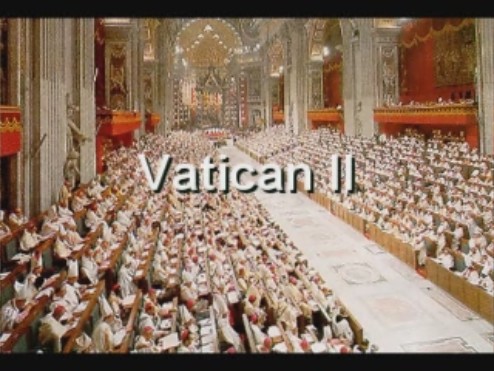 Vatican
II
Vatican
II World
Monetary Crash
World
Monetary Crash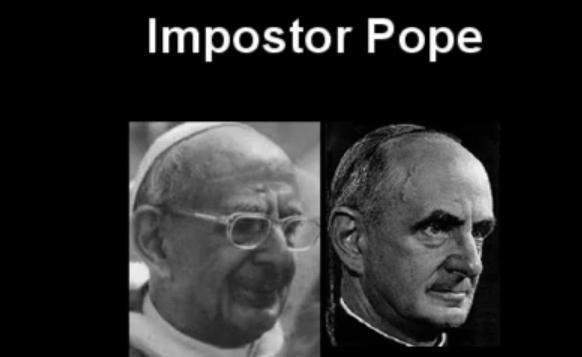 Deception
of the Century
Deception
of the Century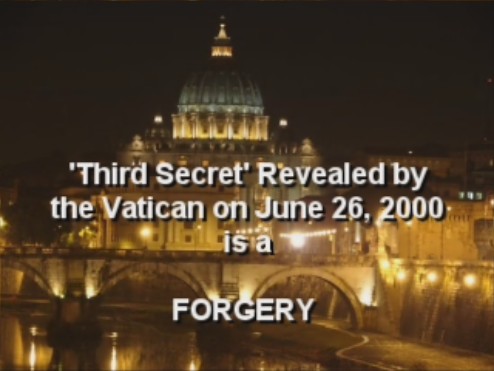 Third
Secret Fabrication
Third
Secret Fabrication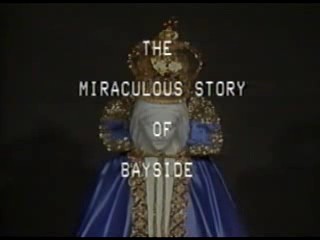 The
Miraculous Story of Bayside
The
Miraculous Story of Bayside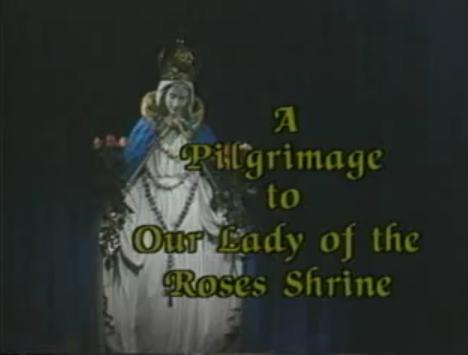 A
Pilgrimage to Our Lady of the Roses Shrine
A
Pilgrimage to Our Lady of the Roses Shrine Jacinta's
Third Secret vision: She saw Pope Paul VI
Jacinta's
Third Secret vision: She saw Pope Paul VI